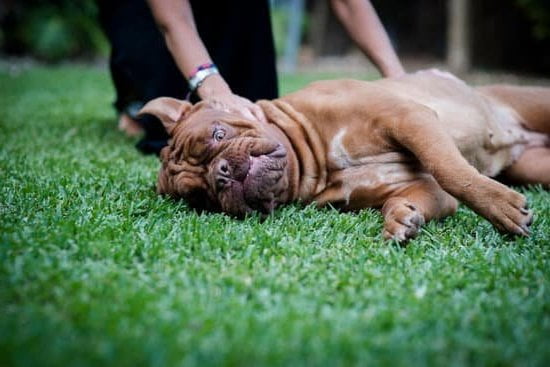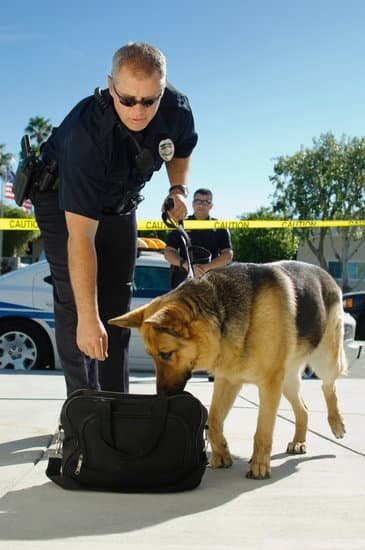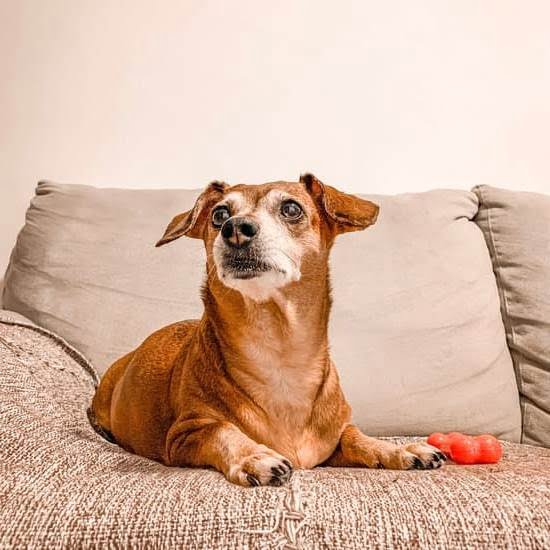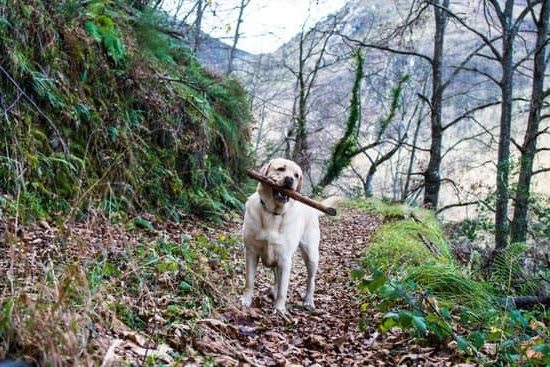Dog training equipment is crucial for effectively teaching and reinforcing desired behaviors in your canine companion. From leashes and collars to clickers and treats, having the right tools can make a significant difference in your dog’s training journey. In this article, we will explore the importance of using proper training gear for your furry friend, as well as delve into essential equipment, tips for choosing the right gear, and maintaining it for long-term effectiveness.
Using the right dog training equipment can greatly enhance the success of your training sessions. It not only helps in managing and controlling your dog but also provides a positive learning experience.
From basic obedience to advanced agility training, the right equipment ensures that both you and your dog can engage in safe and effective learning. Whether you are a first-time pet owner or an experienced trainer, understanding the benefits of proper gear is essential for building a strong foundation with your dog.
In this comprehensive guide, we will discuss different types of essential dog training equipment and their specific roles in shaping your dog’s behavior. We will also provide insights into how to choose the right gear for your pet’s unique needs and offer maintenance tips to ensure that your equipment stays in top condition.
Whether you are looking to enhance obedience, agility skills or simply strengthen the bond with your furry friend, having the right tools at your disposal is key to achieving successful results.
Essential Dog Training Equipment
When it comes to training your furry friend, having the right dog training equipment is essential for successful and effective training sessions. The proper gear not only helps you communicate with your dog more effectively but also ensures their safety and well-being during the training process. From leashes and collars to treats and agility equipment, having the right tools can make all the difference in helping your dog learn and develop good behavior.
One of the most essential items in a trainer’s arsenal is a high-quality leash and collar. There are various types of leashes and collars available, including standard flat collars, martingale collars, choke chains, slip leads, harnesses, and more. Choosing the right one for your dog depends on their size, breed, temperament, and specific training needs. It’s important to research and consult with a professional trainer or veterinarian to determine the best option for your canine companion.
Another must-have item for successful training sessions is a treat pouch filled with training treats. Positive reinforcement is a powerful tool in dog training, and having easy access to small, delicious rewards can help motivate and reward your pup during training exercises. Training treats should be small, soft, and irresistible to your dog to keep them engaged and focused on following commands.
In addition to leashes, collars, and treats, other essential dog training equipment includes clickers, whistles, agility tools like tunnels and jumps, obedience gear like rally signs and cones, as well as safety gear such as muzzles or protective vests for specialized training activities. Each of these items plays a crucial role in different aspects of dog training and can greatly enhance the effectiveness of your training sessions when used correctly.
| Dog Training Equipment | Importance |
|---|---|
| Leash & Collar | Ensures safety & communication |
| Treat Pouch & Training Treats | Facilitates positive reinforcement |
| Clickers & Whistles | Aids in effective communication |
Leashes and Collars
When it comes to leashes, the most common options include standard nylon or leather leashes, retractable leashes, and chain or slip leashes. Each type has its own advantages and disadvantages, so it’s important to consider your dog’s size, strength, and behavior when choosing a leash.
For example, a smaller or less active dog may do well with a standard nylon leash, while a larger or more energetic dog may benefit from a retractable leash for added freedom of movement.
Collars also come in various styles such as buckle collars, martingale collars, choke chains, prong collars, and head halters. The type of collar you choose should be based on your dog’s behavior and temperament. For instance, martingale collars are great for dogs that tend to pull on their leash, while head halters are effective for controlling strong-willed dogs without causing discomfort.
In order to choose the right leash and collar for your dog, consider factors such as their size, breed characteristics, activity level, and any specific behavioral issues they may have. Properly fitting equipment is essential for both safety and effective training results. Investing in high-quality leashes and collars that are well-suited to your dog’s individual needs will make all the difference in successful training sessions.
Clickers and Whistles
The Role of Clickers
Clickers are small handheld devices that make a distinct ‘click’ sound when pressed. They are used to precisely mark the moment when a dog performs a desired behavior, signaling to the dog that a reward is coming. This clear and consistent signal helps in establishing a direct association between the behavior and the reward, making it easier for the dog to understand what is expected of them.
Whistles in Training
While clickers are commonly used for obedience and basic training, whistles are often utilized in more advanced training techniques such as hunting or agility training. Dog training whistles produce a high-pitched sound that can be easily heard from a distance, allowing trainers to communicate with their dogs even when they are far away. Whistle commands can be tailored to specific signals such as recall or directional cues, providing precise communication in various training scenarios.
Learning how to effectively use clickers and whistles requires practice and consistency. It is essential for trainers to establish clear associations between the sounds produced by these tools and the desired behaviors, as well as consistently follow up with appropriate rewards.
When used correctly, clickers and whistles can significantly improve communication during training sessions, leading to better results in shaping your dog’s behavior. As with any other dog training equipment, it’s important to choose high-quality clickers and whistles that are durable and comfortable for both you and your furry friend.
Treat Pouches and Training Treats
When it comes to training your dog, positive reinforcement is a key element in achieving successful results. Treat pouches and training treats play a crucial role in providing rewards that motivate and encourage good behavior in your furry friend. Here are some essential items to consider when choosing the best rewards for positive reinforcement:
- High-Quality Training Treats: Look for treats that are not only delicious but also easy to eat and digest. Soft, small-sized treats are ideal for quick rewards during training sessions.
- Healthy Options: Opt for training treats that are made with high-quality ingredients and free from artificial additives. This ensures that your dog’s diet remains balanced and nutritious, even during training.
Additionally, treat pouches are a convenient way to keep your hands free during training sessions while having quick access to rewards. Consider the following features when selecting a treat pouch:
- Easy Access: Choose a treat pouch that allows you to quickly retrieve treats without fumbling or struggling with zippers or closures.
- Secure Closure: Look for a pouch with a secure closure mechanism to prevent accidental spills or loss of treats during training exercises.
By carefully selecting the right treat pouches and training treats for positive reinforcement, you can effectively motivate your dog to learn new behaviors and commands, making the training process more enjoyable and rewarding for both of you.
Remember that using the proper dog training equipment such as treat pouches and high-quality treats can make a significant difference in achieving successful outcomes during training sessions. It’s important to invest in the right gear that will not only facilitate effective communication between you and your pet but also ensure their safety and well-being throughout the training process.
Agility and Obedience Equipment
Agility and obedience training are advanced techniques that require specific dog training equipment to be effective. These training methods not only improve a dog’s physical abilities but also enhance their mental sharpness and overall discipline.
When it comes to agility training, items such as tunnels, jumps, weave poles, and seesaws are essential tools to create challenging courses for dogs to navigate. Obedience equipment includes items like dumbbells, scent articles, and targets which aid in teaching dogs to follow commands with precision.
One of the most important pieces of agility equipment is the tunnel. Tunnels provide an enjoyable challenge for dogs as they run through them, helping to increase their confidence and agility. Jumps are also fundamental in agility training as they teach dogs to leap over different obstacles with ease.
Weave poles are another crucial tool that helps strengthen a dog’s focus and coordination. In addition to these items, obedience equipment such as dumbbells and scent articles work on refining a dog’s ability to follow commands accurately.
It is important for trainers to ensure that agility and obedience equipment is sturdy, safe, and well-maintained. Regular inspection of these tools is necessary to prevent any accidents or injuries during training sessions. Using high-quality gear not only ensures the safety of the dog but also contributes to the effectiveness of their training. By investing in durable and reliable dog training equipment, trainers can set their furry companions up for success in both agility and obedience training.
| Agility Equipment | Obedience Equipment |
|---|---|
| Tunnels | Dumbbells |
| Jumps | Scent Articles |
| Weave Poles | Targets |
Safety Gear
When it comes to dog training, safety should always be a top priority for both the dog and the trainer. The right safety gear can help prevent accidents and injuries during training sessions, ensuring a positive and successful experience for everyone involved. In this section, we will explore the importance of protective equipment and the different types of gear that can help keep both dogs and trainers safe.
Protective Gear for Dogs
One essential piece of safety gear for dogs is a properly fitted harness. A harness provides better control over your dog, especially if they tend to pull on the leash during walks or training sessions. Additionally, a well-fitted harness can prevent neck injuries that can occur with traditional collars.
Another important piece of protective equipment is booties or paw protectors, especially when training on rough terrain or in extreme weather conditions. These can help prevent cuts, scrapes, and burns on your dog’s paws.
Protective Gear for Trainers
Trainers should also prioritize their own safety while working with dogs. One crucial piece of protective equipment is a sturdy pair of gloves to protect hands from scratches and bites. Additionally, trainers should consider wearing closed-toe shoes to prevent accidental injury if a dog steps on their feet during training exercises. For added protection, some trainers may choose to use bite sleeves or padded suits when working with more aggressive or high-energy dogs.
Importance of Proper Fit and Quality
It is important to ensure that all safety gear for dogs and trainers is properly fitted and made of high-quality materials. Ill-fitting gear can cause discomfort or even lead to accidents during training sessions. Investing in durable, well-made protective equipment is essential for creating a safe environment for both dogs and trainers during training exercises.
Training Equipment Maintenance
In conclusion, proper maintenance of your dog training equipment is crucial for ensuring effective and successful training sessions with your furry friend. By taking good care of your gear, you can guarantee that it will continue to function optimally, allowing you to focus on the training process without any distractions or setbacks.
One key aspect of training equipment maintenance is regular cleaning. Whether it’s leashes, collars, clickers, or treat pouches, keeping these items clean and free from dirt and grime is essential for their longevity and functionality. Regularly inspecting the gear for any signs of wear and tear is also important, as any damaged equipment can compromise the safety and effectiveness of your training sessions.
Additionally, storing your dog training equipment properly is crucial for maintaining its condition. Proper storage helps prevent unnecessary wear and damage to the gear, ensuring that it remains in top condition for as long as possible. By following these maintenance tips, you can maximize the lifespan of your dog training equipment and continue to have successful training sessions with your beloved pet.

Welcome to the blog! I am a professional dog trainer and have been working with dogs for many years. In this blog, I will be discussing various topics related to dog training, including tips, tricks, and advice. I hope you find this information helpful and informative. Thanks for reading!





